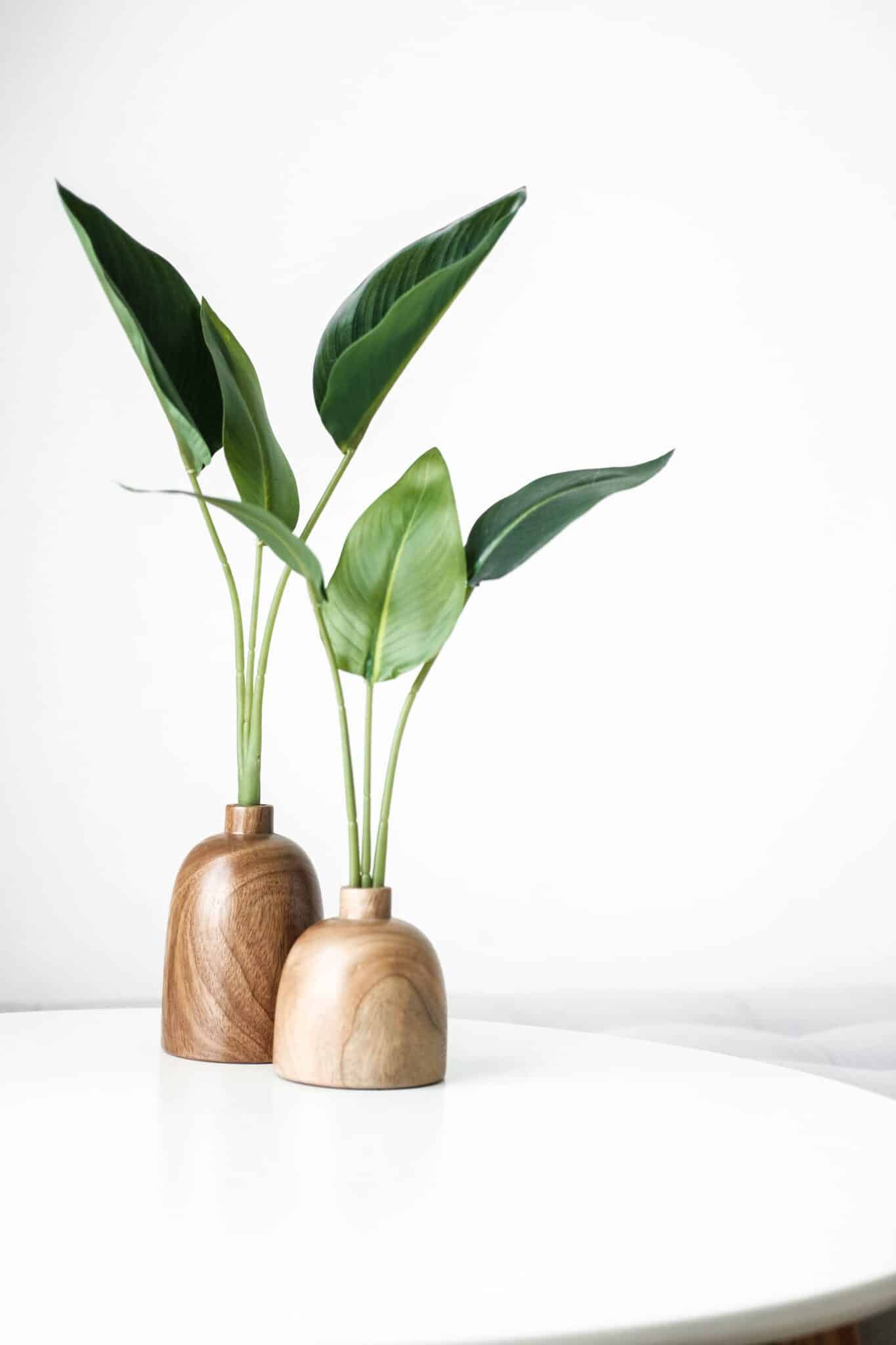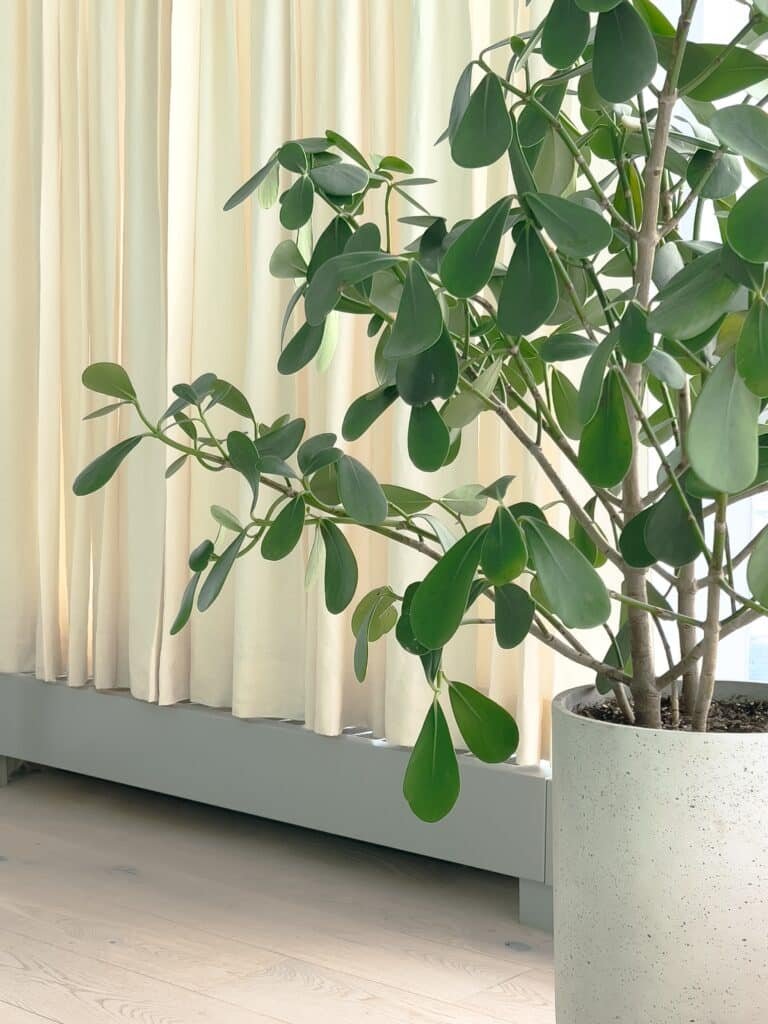Free Shipping On All Orders
15 Interior Plant Design Ideas 2024 You Will Love

In the realm of interior design, there’s a growing trend that breathes life into our living and working spaces: interior plant design. Incorporating indoor plants into our surroundings not only adds visual appeal, but also offers a myriad of health and well-being benefits. From small succulents to towering tropicals, greenery can transform an environment into a sanctuary. It’s all about making strategic and beautiful choices to enhance our spaces and emotional well-being.
Finding the perfect indoor plants is an astonishingly vast and customizable world. Factors such as room conditions, lighting, and care preferences play key roles in selecting suitable flora. For instance, some plants thrive in low light, making them perfect for dimly lit corners, while others demand bright, indirect sunlight to flourish. Moreover, indoor plants can be creatively displayed using eye-catching containers, hanging baskets, and even living walls.
As we delve into the art of interior plant design, we’ll explore not only how to choose the perfect plants for your spaces but also how to care for them and create stunning plant displays. Together, we’ll unlock the potential of greenery to elevate our homes and offices to new heights. With expert tips in hand, you’ll be well on your way to cultivating a vibrant, healthy, and beautiful indoor landscape.
Understanding Interior Plant Design
Do you want to breathe life into your home or office? Interior plant design is your answer. This innovative approach integrates nature into your living spaces, creating an environment where you can thrive. Interior plant design is more than just decorating with a few potted plants – it’s a deliberate integration of nature into the very fabric of your indoor spaces. It’s an art form that not only beautifies your surroundings but also enhances your well-being. Let’s dive in and explore the purpose and benefits of this powerful design tool.
Purpose
The primary goal of interior plant design is to establish a connection between the indoors with nature, enriching your living spaces and creating a harmonious ambiance. It’s an essential element within the wider scope of interior design. By thoughtfully selecting and placing plants throughout your home or office, you can achieve a dynamic and vibrant environment that promotes relaxation, inspiration, and well-being.
Incorporating plants into your interior design can also aid in health benefits as well. Plants are natural air purifiers, helping to remove toxins and pollutants while producing oxygen, which leads to cleaner air and better health for everyone who occupies the space.

Benefits
The inclusion of plants in interior design comes with a wealth of benefits that go beyond aesthetics:
- Health and well-being: Plants are known to reduce stress, boost mood, and improve air quality, leading to a healthier and more pleasant environment.
- Productivity: Studies have shown that working in spaces with plants can increase productivity and focus. This can be especially useful in office or study areas.
- Acoustic benefits: Plants can act as natural sound absorbers, helping to reduce noise levels and create a more peaceful atmosphere.
While some people might be hesitant to incorporate plants into their spaces because they lack a green thumb, interior plant design is accessible to everyone. With a variety of low-maintenance options and carefully chosen placements, you can reap the rewards of living in harmony with nature, regardless of your gardening skills.
Don’t let your home be a dull, lifeless space. Bring the outside in and create a cozy, refreshing atmosphere with indoor plant design. Not sure where to start? Don’t worry – this guide will lead you right through the process of selecting the right plants to elevate your space and impress everyone who visits. Let’s dive in!
Selecting the Right Plants
Best Indoor Plants
When it comes to interior plant design, choosing the right plants is key. Each plant has its own unique style and characteristics, so consider the specific look you want for your space. Some popular options include:
- Snake Plant: Known for its tall, upright leaves, this low-maintenance plant adds height and drama to any room.
- Philodendron: With its vining habit and lush foliage, philodendrons bring a tropical touch to your space.
- Peace Lily: Sporting beautiful white flowers, this air-purifying plant adds a touch of elegance to your interior.
- Bird’s Nest Fern: This fern’s unique ruffled fronds make it a standout among other greenery.
- Succulents: For a modern twist, add some low-maintenance succulents to your design.

by plantitolo

by philolina

by Vidita Menon


by Masata
Size and Growth Considerations
Before making your final plant selections, consider the size and growth patterns of each plant. Here are some tips to keep in mind:
- Available space: Be mindful of the space you have and choose plants that will thrive without dominating the area. Consider ceilings and furniture heights when selecting floor or hanging plants.
- Plant height: Opt for multi-dimensional designs by placing plants at various heights to create layers in your home, as plant stylist Hilton Carter suggests.
- Growth rate: Keep in mind that some plants, like trees and large ferns, may grow quickly and require more pruning or repotting over time.
Ultimately, the plants you choose should complement your interior style and make a statement. By considering their appearance, size, and growth patterns, you’ll craft a beautifully designed space filled with natural life that brings joy to everyone who enters.
Are you tired of your indoor space looking drab and lifeless? Breathe life into your home with the mesmerizing beauty of plants. By understanding plant care and maintenance, you’ll effortlessly create a vibrant, flourishing indoor garden. Let’s get started on transforming your space into a personal oasis!
Plant Care and Maintenance
Light and Watering Requirements
Every plant has unique light and watering needs. Generally, they fall into three categories:
- Low light: thrive in indirect or minimal sunlight
- Medium light: prefer bright, indirect sunlight
- High light: require direct, intense sunlight
To determine a plant’s specific light requirements, research its native habitat or consult a gardening expert.
Watering is equally crucial for plant health. Over- or under-watering can harm plants and even cause death. Remember these rules of thumb:
- Succulents and cacti: water sparingly
- Moisture-loving plants: maintain consistently damp soil
- Average houseplants: allow the soil to dry slightly before re-watering

Soil and Fertilizing
Different plants require different soil types to provide the proper nutrients and drainage. Among the most common soil mixtures are:
- All-purpose potting mix
- Succulent and cactus mix
- African violet mix
- Orchid mix
Fertilizing is essential for plants to thrive. Use a balanced, slow-release fertilizer every 4-6 weeks during the growing season. Reduce or stop fertilizing during winter months when growth slows down.

Pruning and Cleaning
Pruning keeps plants looking their best and encourages healthy growth. Follow these pruning best practices:
- Remove dead leaves and branches to enhance the plant’s appearance
- Pinch back new growth on stems to increase bushiness
- Trim leggy plants to redirect energy to new growth
Also, keep your plants clean by periodically wiping dust off leaves with a damp cloth or gently rinsing foliage under lukewarm water. A clean plant can photosynthesize better and maintain a healthier appearance. Regular cleaning also helps prevent pests from infesting your plants.
Designing for Space and Style
Imagine walking into a room filled with vibrant greenery that not only uplifts your mood but also complements the overall home décor. Sounds appealing, right? In this age of indoor living, integrating plant life into our homes and workspaces is no longer just an aesthetic choice, but a means to enhance our day-to-day wellbeing. This section delves into designing for space and style with a focus on residential and commercial spaces, incorporating plants, and creating harmonious interior landscapes that are both functional and visually appealing.
Residential Spaces
In residential settings, interior plant design involves strategically using planters, greenery, and décor elements to accentuate a room without creating clutter. A popular approach is to bring nature into living spaces like the living room or kitchen by placing statement plants in eye-catching pots, or by arranging a collection of smaller plants on floating shelves.
In bedrooms, opt for air-purifying plants that can improve sleep quality. You can also play around with various plant heights and sizes to create a visually balanced vignette.
Consider utilizing natural light and room constraints when deciding on the type of plant and the size of the planter. Aside from enhancing residential décor, interior landscaping can make a home more inviting and positively influence the mental health of its occupants.

Commercial Spaces
For commercial spaces like offices or stores, plants can significantly improve the ambiance and aesthetics, translating to increased employee satisfaction and customer appeal. One way to incorporate greenery in such spaces is by installing low-maintenance, office-appropriate plants in various strategic locations like entryways, workstations, and communal areas.
Also, large-scale interior landscapes can create a strong impact in commercial settings, transforming bland spaces into lush, vibrant environments. Professional installation of living green walls or partitioning areas with tall plants can serve both aesthetic and functional purposes, providing employees and customers with a refreshing atmosphere.

To sum up, incorporating plants into both residential and commercial spaces not only enhances the décor and ambiance but also promotes a sense of wellbeing and connection to nature. By carefully considering the space, style, and functional requirements, interior plant design can become an integral part of any home or workspace.
Frequently Asked Questions
What are common indoor plants?
Some popular indoor plants include the Fiddle Leaf Fig, Spider Plant, Peace Lily, Snake Plant, and Pothos. These plants are known for their low maintenance requirements and adaptability to various light and humidity conditions.
How to choose plants for interior design?
When selecting plants for interior design, consider factors such as light conditions, humidity, available space, and required maintenance. Opt for plants that complement your overall design aesthetic and color scheme. Ensure the chosen plants can thrive in the environment where they’ll be placed.
How to arrange indoor plants aesthetically?
Arrange indoor plants in groups and balance their varying heights, colors, and textures. Use pots and planters that match your interior style, and place them on shelves, windowsills, or in corners to create visual interest.
Do indoor plants improve air quality?
Indoor plants can help improve air quality by filtering airborne toxins and releasing oxygen. However, the effect on overall air quality is limited, and proper ventilation is essential for maintaining a healthy indoor environment.
What are the benefits of interior plantscaping?
Interior plantscaping offers numerous benefits including increased aesthetic appeal, improved air quality, reduced stress, and increased productivity. Additionally, plants can help regulate indoor humidity and temperature, creating a more comfortable living and working environment.
What care is needed for interior plants?
Proper care for interior plants includes providing appropriate light, water, humidity, and temperature conditions. Regularly check for pests, such as spider mites, and trim any dead or yellowing leaves. Use a well-draining potting mix and fertilize periodically as per the plant’s specific requirements.
If you liked this post about interior plant design, don’t forget to follow us on Pinterest so you don’t miss any more interior design news!





